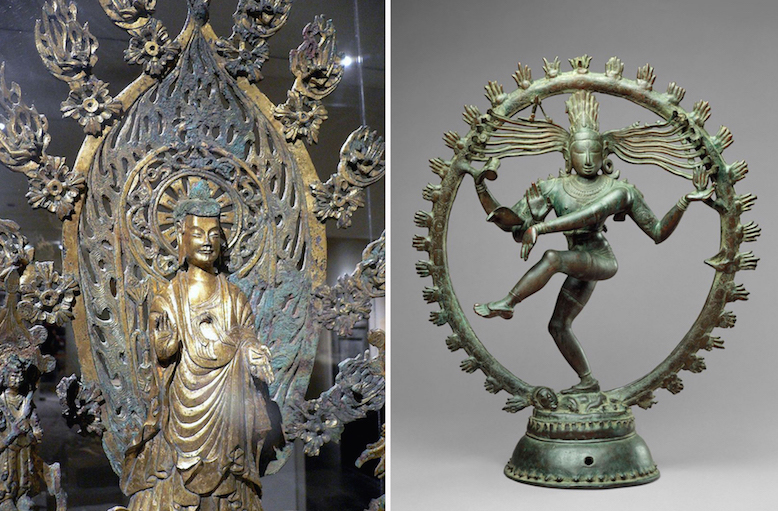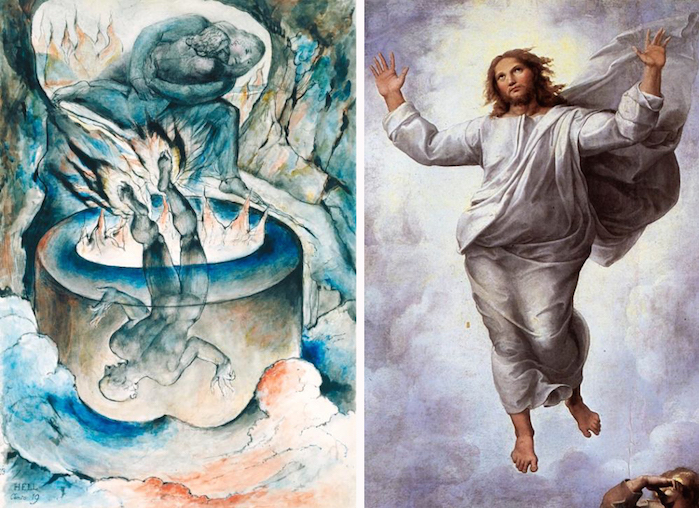
Whatever happened to the halo in art? Round glowing disks, either full body or framing the head, used to signify holy figures. The Buddha pictured above sits before a glowing screen with flames shooting off at the edges. The fire signifies enlightenment. Above right, Shiva, Lord of Destruction and Transformation, dances in a ring of fire–the never-ending cycle of time.

Fires, as in the Blake image above, can signify destruction or punishment. Brilliant light like that enveloping the figure of Christ in Raphael’s Transfiguration can signify God-like powers.

Halos appear in different religious traditions. In this image from ancient Egypt, Ra, the Sun God, wears a red disc as a crown and holds the ankh, symbol of life. Beside him sits Amentet, goddess of death, to guide the soul of the deceased in the afterlife.

Can you identify this kissing couple? Each has a halo, but the halos crush together into a heart shape as the old man and woman kiss. Art critic Tom Lubbock describes the kiss as two egg yokes merging together. The painting is by Giotto. The image depicts the meeting of Joachim and Anne at the City Gate in Jerusalem, a fresco created in 1305 for the Scrovegni Chapel in Padua. Why are the couple so happy? They’ve lived long lives without children and now an angel has announced they are about to be parents for the first time. Their child, of course, will be the Virgin Mary, mother of Jesus. My interpretation: grandparents are important.

As art becomes more secular, the halo motif shifts from the field of religion to the field of politics. King Louis XIV of France called himself the Sun King and made a sunburst emblem with his own portrait to reinforce this idea. The emblem was stamped on everything that belonged to Louis, including his artillery. The head of the famous Statue of Liberty wears a similar celestial crown with dramatic sun spikes. The torch in her uplifted hand reinforces this idea of a human beacon.

Halos follow money and there’s money in pop culture and advertising. In 2017, Beyoncé performed at the Grammys in a Peter Dundas gown and House of Malakai headdress that featured a halo crown. The Sun Maid logo has been used to sell raisins since 1912. It seems it’s not enough that we want instantly catchy music and quick tasty snacks, we want to believe there’s some inner goodness to these things as well.

Why is Big Pharma selling drugs and putting halos around them? There’s a drug called Haloperidol, which is used for severe behavior problems in hyperactive children. Parents wishing they could turn problem children into angels. As drugs become the solution to all our problems, drug salesmen become shapers of public belief–the new priests and guardians of holy fire.